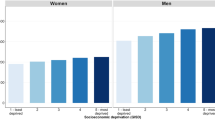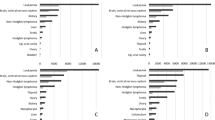Abstract
Several methods of ascertaining and classifying childhood neoplasms for epidemiological study have been evaluated using material from the University of Manchester Children's Tumour Registry (CTR), which includes data from several sources on children with neoplasms first seen in the period 1954-73 who were under 15 years old and living in the Manchester Regional Hospital Board area at the time. Two systems of classification-the International Classification of Diseases (ICD) and the Morphology Section of the Manual of Tumor Nomenclature and Coding (MOTNAC; Percy, Berg and Thomas, 1968)-were tested. No major problems arose with the Morphology Section of MOTNAC, and we recommend that the revised version of this section, in the proposed "International Classification of Diseases for Oncology", should be used in epidemiological reports on children's tumours whenever possible. The ICD discriminates less well between the commoner types of childhood neoplasms, but must be retained as a supplementary classification to facilitate international comparisons. A comparison of the completeness of ascertainment achieved in recent years by each source of data showed that more than 98% of the serious cases (neoplasms that were malignant and/or lay within the craniovertebral canal) could have been identified using a combination of Hospital Activity Analysis (HAA) and cancer registration records, and more than 95% using HAA and death records. But in an analysis of 2 years' HAA returns and 6 years' cancer registrations of serious cases, nearly one quarter of the former and one fifth of the latter were shown to record diagnoses which differed from those finally assigned at the CTR. It is concluded that, in epedimiological studies based on routine records, the diagnoses given should always be checked centrally, by experts, in the light of all the available clinical and pathological material (including histological preparations).
This is a preview of subscription content, access via your institution
Access options
Subscribe to this journal
Receive 24 print issues and online access
$259.00 per year
only $10.79 per issue
Buy this article
- Purchase on Springer Link
- Instant access to full article PDF
Prices may be subject to local taxes which are calculated during checkout
Similar content being viewed by others
Rights and permissions
About this article
Cite this article
Leck, I., Birch, J., Marsden, H. et al. Methods of classifying and ascertaining children's tumours. Br J Cancer 34, 69–82 (1976). https://doi.org/10.1038/bjc.1976.124
Issue Date:
DOI: https://doi.org/10.1038/bjc.1976.124



